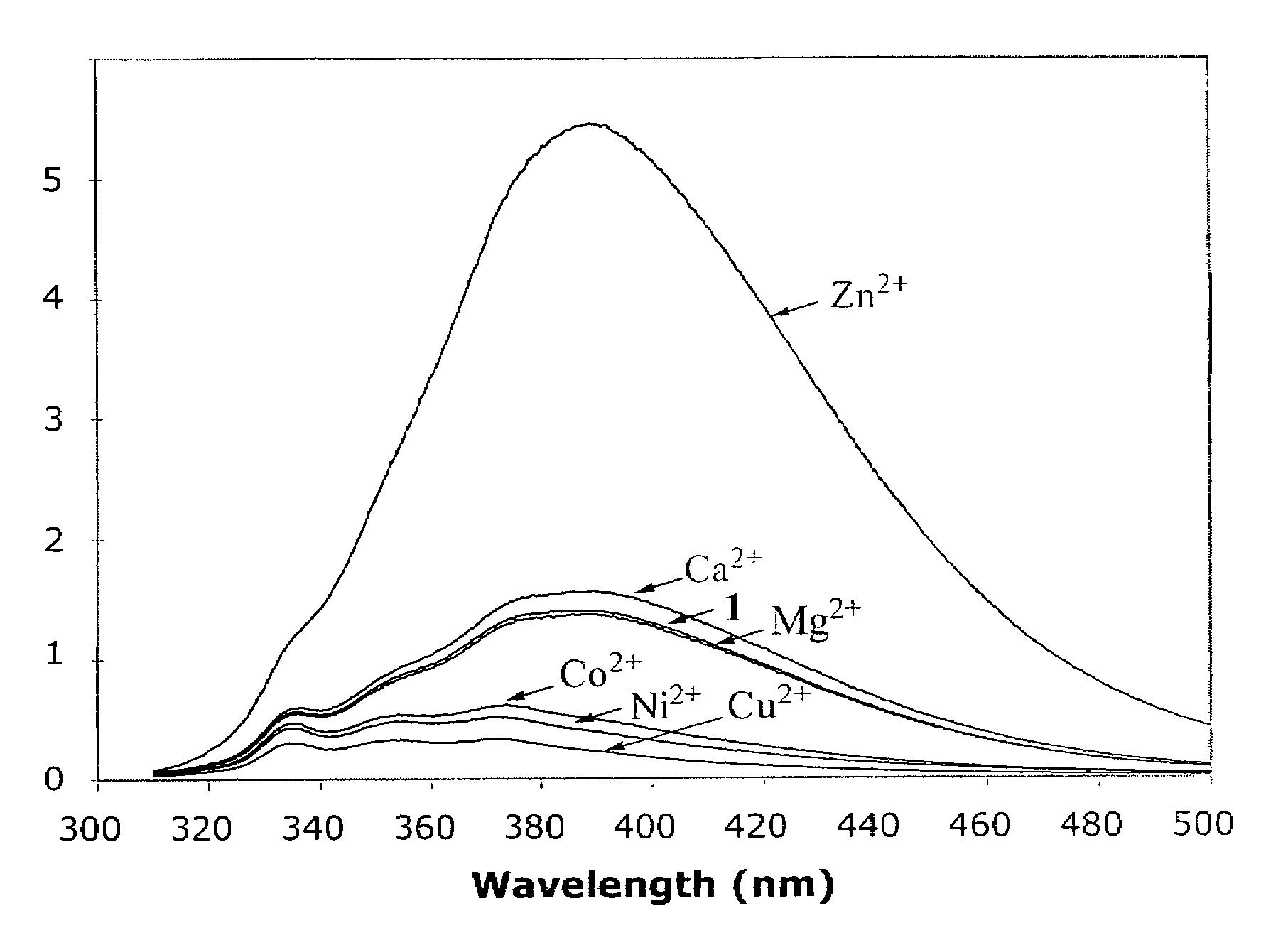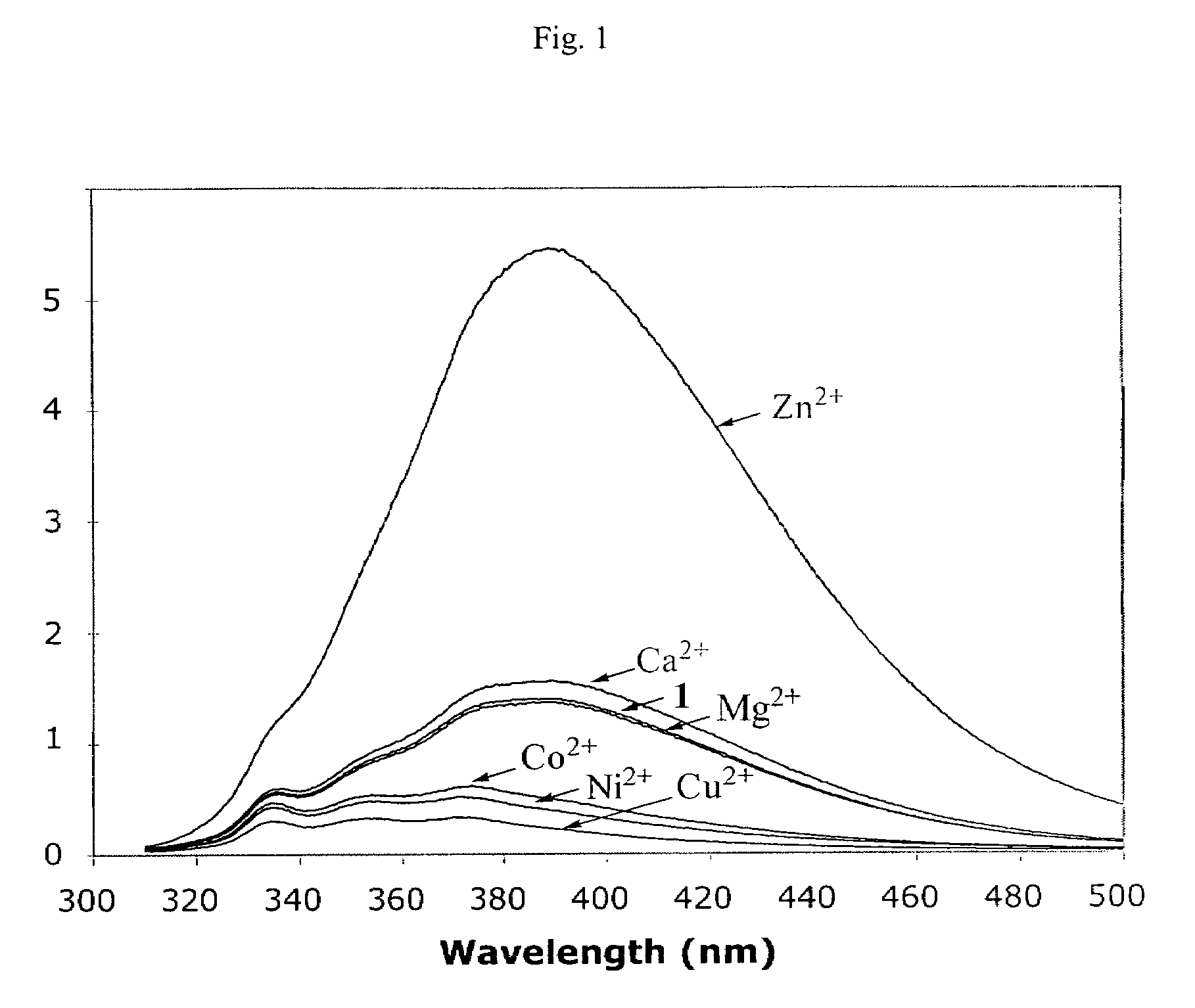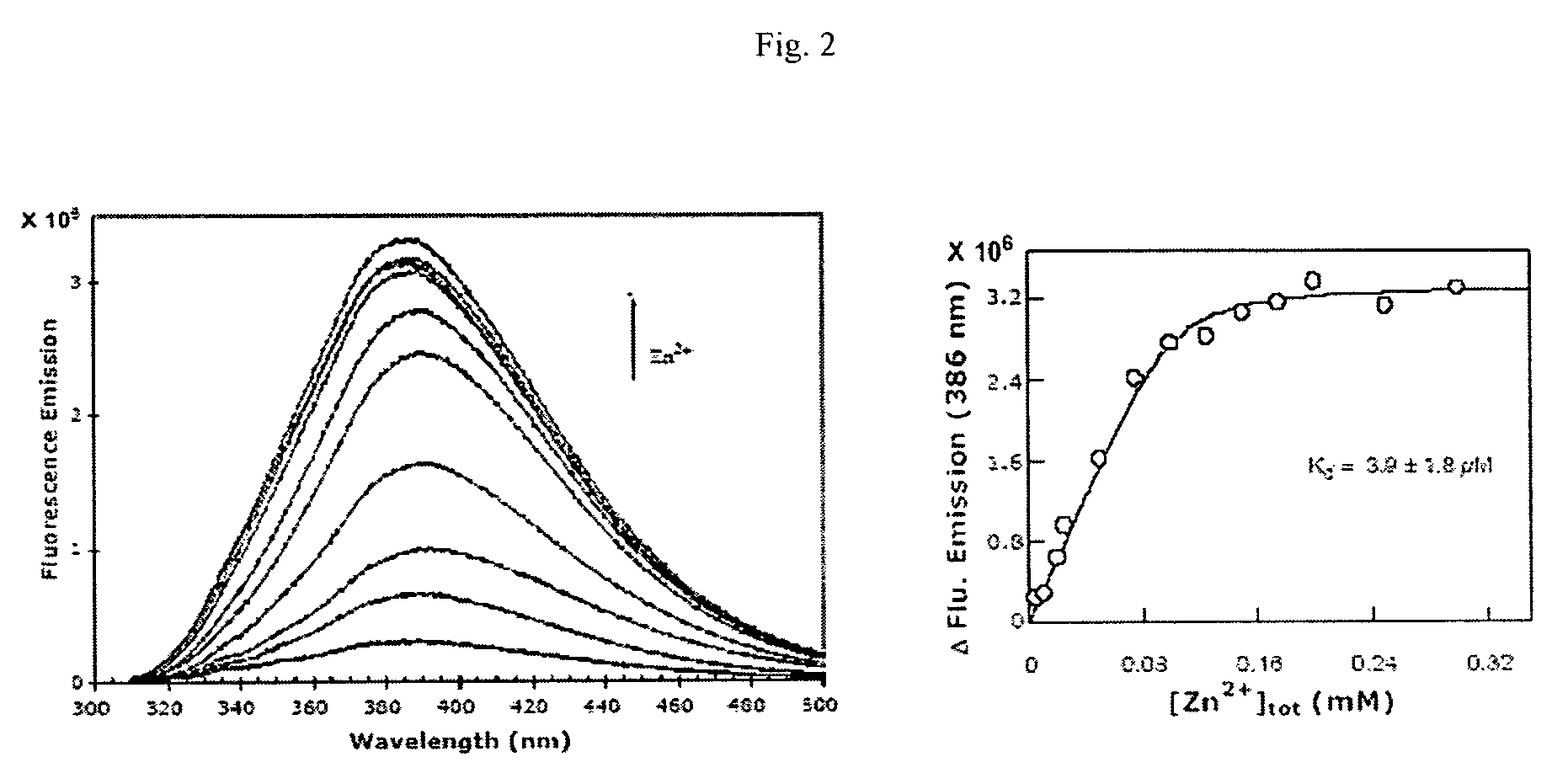Divalent metal ion sensors and binders
a technology sensors, which is applied in the field of divalent metal ion sensors and binders, can solve the problems of inability to differentiate between different types of divalent metal ions in biological samples, the relative contribution of one type of metal ions versus the other type of causing disease, etc., and achieves high specificity.
- Summary
- Abstract
- Description
- Claims
- Application Information
AI Technical Summary
Benefits of technology
Problems solved by technology
Method used
Image
Examples
example 1
Synthesis of Novel Diamino Polyacetate Alkoxy Benzene Compounds: Potassium-2,6-diamino-(N,N,N′,N′-tetraacetate)-4-methylanisole (Compound 1)
[0012]Commercially available reagents, obtained from Acros Organics and Aldrich were used as received. All solvents were distilled before use. Reactions were monitored by thin-layer chromatography (TLC) and visualization was accomplished with a UV lamp. Reaction mixtures were purified by column chromatography, performed with the indicated solvents using silica gel (230-400 mesh). The Rf values were calculated based on the eluents used for purification. The yields reported refer to chromatographically and spectroscopically pure compounds. The purity of the compounds were ascertained by GC / MS analysis (HP 5890 Series II GC fitted with HP 5971 Series Mass Selective Detector). 1H and proton decoupled 13C NMR spectra were recorded on a Bruker AMX 500 MHz spectrometer at ambient temperature. The fluorescence spectra were obtained using Jobin Yvon Hori...
example 2
Fluorescence Profile of Potassium-2,6-diamino-(N,N,N′,N′-tetraacetate)-4-methylanisole (Compound 1)
[0020]The influence of divalent metal ions on the fluorescence spectral profile of compound 1 is shown in FIG. 1, where the fluorescence emission spectra of 200 μM compound 1 (λex=300 nm) with stoichiometric concentrations of selected divalent metal ions. Compound 1 has a weak fluorescence emission peak around 386-390 nm, which is differently affected by different metal ions. The emission intensity of compound 1 (at 390 nm) was barely affected in the presence of Mg2+ and only slightly increased in the presence of Ca2+. In contrast, the fluorescence intensity of compound 1 decreases in the presence of Cu2+, Ni2+, and Co2+. The most dramatic effect of fluorescence profile of compound 1 was observed in the presence of Zn2+.
[0021]Surprisingly, in the presence of stoichiometric concentration of Zn2+ the fluorescence emission intensity of compound 1 was increased by about 10 fold. Such an en...
example 3
Binding Kinetics of Potassium-2,6-diamino-(N,N,N′,N′-tetraacetate)-4-methylanisole (Compound 1)
[0023]To determine the magnitude of Zn2+ induced fluorescence spectral changes of compound 1 as well as its binding affinity, a detailed spectrofluorometric titration study was performed. In FIG. 2 (right panel) shows the fluorescence emission spectra of compound 1 (corrected for the buffer) as a function of increasing concentrations of ZnCl2. The fluorescence emission intensity at 386 nm (λex=300 nm) showed a saturating profile as a function of ZnCl2 (FIG. 2, left panel). Since the concentration of compound 1 was comparable to the initial concentrations of Zn2+, the binding constant of compound 1-Zn2+ complex was calculated by a complete solution of the quadratic equation, describing their interaction. The solid line was the best fit of the experimental data for the Kd value of 6.1±2.5 μM and the stoichiometry of 1:1 (i.e. 1 mole of bound Zn2+ per mol of compound 1).
[0024]The basis of com...
PUM
| Property | Measurement | Unit |
|---|---|---|
| pH | aaaaa | aaaaa |
| wavelengths | aaaaa | aaaaa |
| wavelengths | aaaaa | aaaaa |
Abstract
Description
Claims
Application Information
 Login to View More
Login to View More - R&D
- Intellectual Property
- Life Sciences
- Materials
- Tech Scout
- Unparalleled Data Quality
- Higher Quality Content
- 60% Fewer Hallucinations
Browse by: Latest US Patents, China's latest patents, Technical Efficacy Thesaurus, Application Domain, Technology Topic, Popular Technical Reports.
© 2025 PatSnap. All rights reserved.Legal|Privacy policy|Modern Slavery Act Transparency Statement|Sitemap|About US| Contact US: help@patsnap.com



